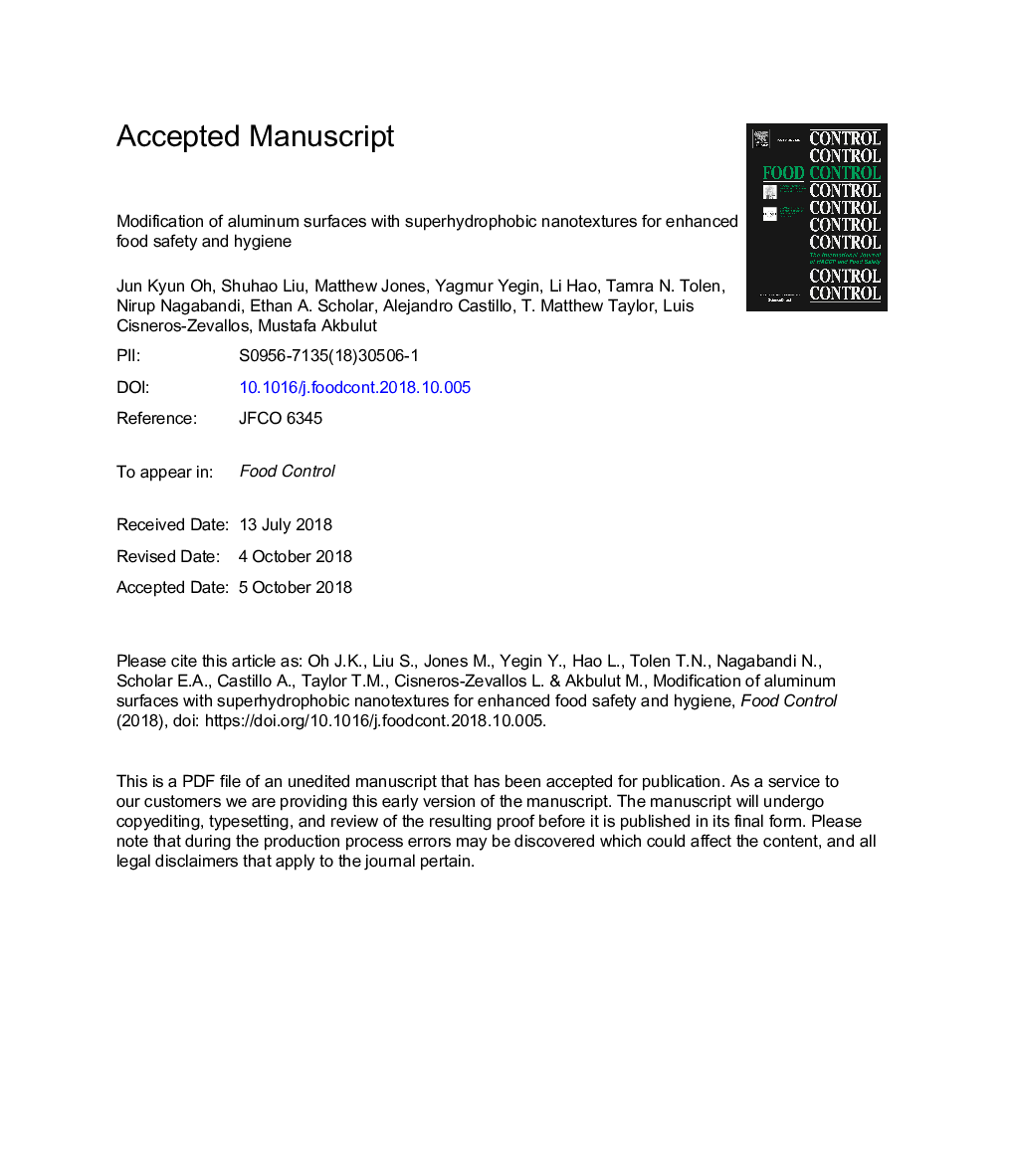| Article ID | Journal | Published Year | Pages | File Type |
|---|---|---|---|---|
| 11030369 | Food Control | 2019 | 23 Pages |
Abstract
As a result of frequent outbreaks occurring due to poor hygiene and improper sanitation of processing environments, there has been an increasing demand for the development of food-contact surface materials that intrinsically inhibit and reduce likelihood of potential microbial adherence and biofilm formation. Herein, we report the synergistic utilization of surface nanotexturing and chemical modifications with nonpolar functional groups on aluminum surfaces to produce coatings having bacterial super-repellant and mud anti-fouling characteristics. Using these coatings, the attachment of Salmonella Typhimurium LT2 and Listeria innocua as pathogen surrogates was reduced more than 99.0%, compared to the bare aluminum surfaces. In addition, the coating strongly resisted the adhesion of mud, showing a 10-fold reduction in the area of mud adhesion upon submerging in mud solution. Moreover, this method is both versatile and scalable, involving inert and biocompatible building blocks. Overall, this study contributes to the field of food safety through the design and development of novel coatings for achieving improved food safety and hygiene.
Related Topics
Life Sciences
Agricultural and Biological Sciences
Food Science
Authors
Jun Kyun Oh, Shuhao Liu, Matthew Jones, Yagmur Yegin, Li Hao, Tamra N. Tolen, Nirup Nagabandi, Ethan A. Scholar, Alejandro Castillo, T. Matthew Taylor, Luis Cisneros-Zevallos, Mustafa Akbulut,
